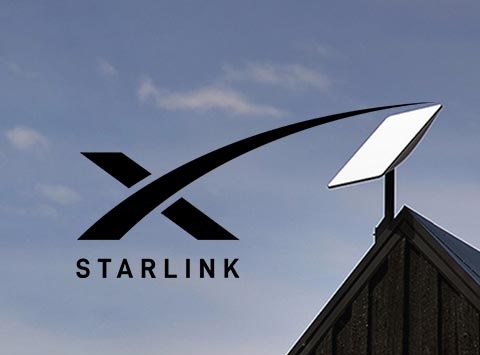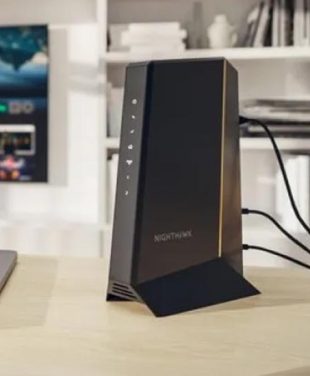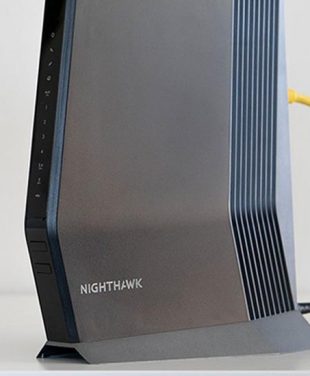Compare Major Internet Service Providers in the US
Competition between internet service providers is fierce, with lots of great offers available. It’s worth noting that your router, modem, and ISP all need to handle superfast speeds to get the most out of the latest WiFi 7 standard. Now is the right time to compare internet plans and speeds. Note that plans and offers change regularly so consider shoping around. Here are six of the best internet service providers in the USA today.
1. Comcast Xfinity (Cable Internet)
Coverage: Widely available across the US.
Benefits: Offers a range of plans with varying speeds suitable for different households.
Plans Overview:
-Performance Starter (Up to 50 Mbps): Ideal for individuals or small households focusing on basic browsing, emailing, and occasional streaming.
-Performance Pro (Up to 200 Mbps): Suitable for small families who stream HD videos, participate in online gaming, and connect multiple devices.
-Blast! Pro Plus (Up to 400 Mbps): Great for larger households with multiple users who stream in 4K, game online, and have numerous smart devices.
-Gigabit (Up to 1000 Mbps): Best internet speeds for gaming, 4K/8K streaming, large file transfers, in ultra-connected home setups.
Who It’s Best For: Families and individuals who need reliable high-speed internet tailored to their usage patterns.
TIP: Upgrading with your own cable modem will save on monthly rental fees and allow your router to transmit the fastest available internet speeds.
2. Spectrum (Cable Internet)
Coverage: Available in many urban and suburban areas.
Benefits: No data caps and straightforward plans.
Plans Overview:
-Spectrum Internet (Up to 200 Mbps): Suitable for everyday activities like browsing, emailing, and SD streaming; ideal for small households.
-Spectrum Internet Ultra (Up to 400 Mbps): Better for medium-sized families needing reliable speeds for HD streaming, online gaming, and remote work.
-Spectrum Internet Gig (Up to 940 Mbps): For power users and large households requiring high speeds for 4K streaming, competitive gaming, and extensive device connectivity.
Who It’s Best For: Users seeking unlimited internet access with options to match their speed requirements.
3. Cox Communications (Cable Internet)
Coverage: Serves various regions including the Southwest, Midwest, and East Coast.
Benefits: Offers a variety of plans with flexible speed options and reliable service.
Plans Overview:
-Cox Internet Starter 25 (Up to 25 Mbps): Good for individuals focusing on basic internet use like emailing and web browsing.
-Cox Internet Essential 50 (Up to 50 Mbps): Suitable for small households with light streaming and casual browsing needs.
-Cox Internet Preferred 150 (Up to 150 Mbps): Ideal for families engaging in HD streaming, online gaming, and connecting multiple devices.
-Cox Internet Ultimate 500 (Up to 500 Mbps): Great for larger households with heavy internet usage, including 4K streaming and gaming.
-Cox Gigablast (Up to 1000 Mbps): Best for tech enthusiasts and smart homes requiring top-tier speeds for multiple high-demand devices.
Who It’s Best For: Those seeking customizable plans with a balance between speed options and pricing.
4. Verizon Fios (Fiber Internet)
Coverage: Primarily in the Northeast.
Benefits: Fiber-optic network offering fast and reliable symmetrical speeds.
Plans Overview:
-200 Mbps Plan: Good for small families engaging in HD streaming, video conferencing, and online gaming with moderate device connectivity.
-400 Mbps Plan: Ideal for households with multiple users and devices, supporting HD/4K streaming, online gaming, and remote work.
-Gigabit Connection (Up to 940 Mbps download / 880 Mbps upload): Perfect for large families, content creators, and tech enthusiasts needing ultra-fast speeds for data-intensive tasks.
Who It’s Best For: Those seeking high-speed, reliable fiber connections with equal upload and download speeds.
5. AT&T Internet
Coverage: Available in various regions nationwide.
Benefits: Offers both fiber and DSL options depending on location.
Plans Overview:
-Internet 100 (Up to 100 Mbps): Suitable for individuals or small families for standard browsing, emailing, and SD streaming.
-Internet 300 (Up to 300 Mbps): Good for medium-sized households engaged in HD streaming, online gaming, and connecting several devices.
-Internet 1000 (Up to 1000 Mbps): Ideal for large families and heavy internet users requiring seamless 4K streaming, competitive gaming, and smart home device integration.
Who It’s Best For: Users needing flexible internet options, with fiber plans offering the best performance where available.
6. T-Mobile Home Internet
Coverage: Expanding across the U.S., particularly beneficial in suburban and rural areas.
Benefits: Uses 5G and 4G LTE network technology for an alternative home internet option.
Plans Overview:
-Home Internet Plan (Average Speeds Between 33–182 Mbps): A simple, no-frills plan suitable for general browsing, streaming, and connecting multiple devices in small to medium households.
Who It’s Best For: Those in areas with strong T-Mobile coverage looking for a straightforward wireless internet solution without the need for wired connections.
TIP: The latest 5G mobile hotspots are powerful enough to provide a reliable home internet connection and as an essential travel companion when you are away from home. Use In-Home Performance Mode to double Nighthawk Mobile Hotspot WiFi coverage.
7. Starlink Satellite Internet
Coverage: Available across the U.S., northern states and rural locations benefit most from satellite configuration.
Benefits: Uses a network of thousands of small low-altitude satellites allowing for low-latencies (25ms – 75ms) comparable to traditional ISPs and a small “Pizza Box” sized outdoor antenna.
Plans Overview:
Residential plan with fixed location and unlimited data (Average Speeds Between 25–150+ Mbps). (Roaming, and maritime plans also available at various costs. & data-limits)
Who It’s Best For: If you have few local broadband options, or simply want to use exciting new satellite technologies that are constantly being upgraded with more/powerful satellites.
TIP: To learn more about the Best Routers for Starlink, check out our companion article.







